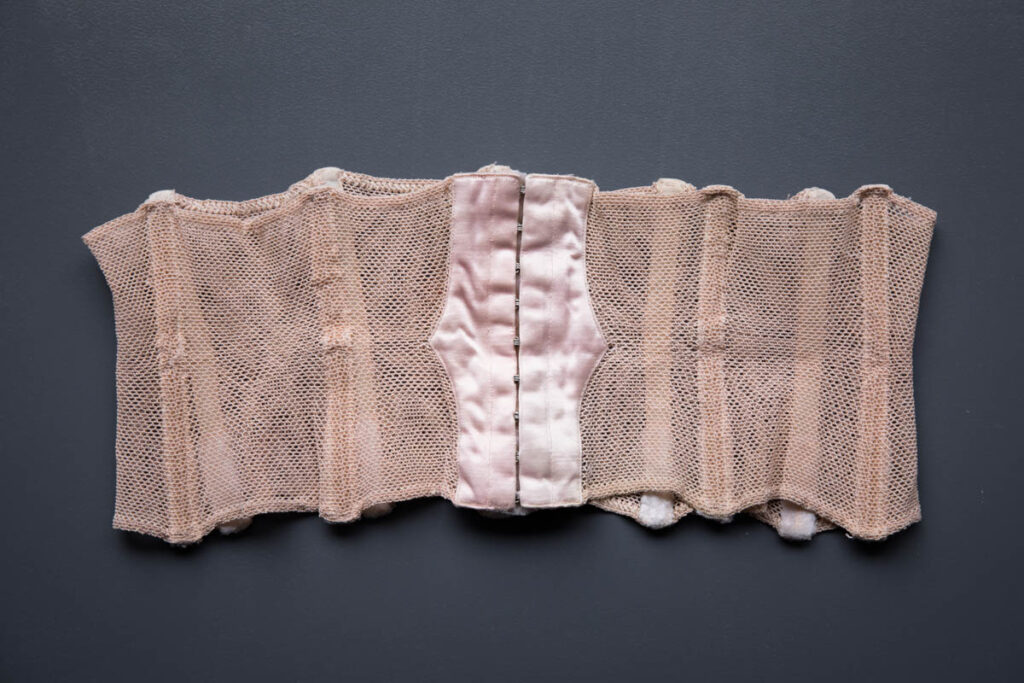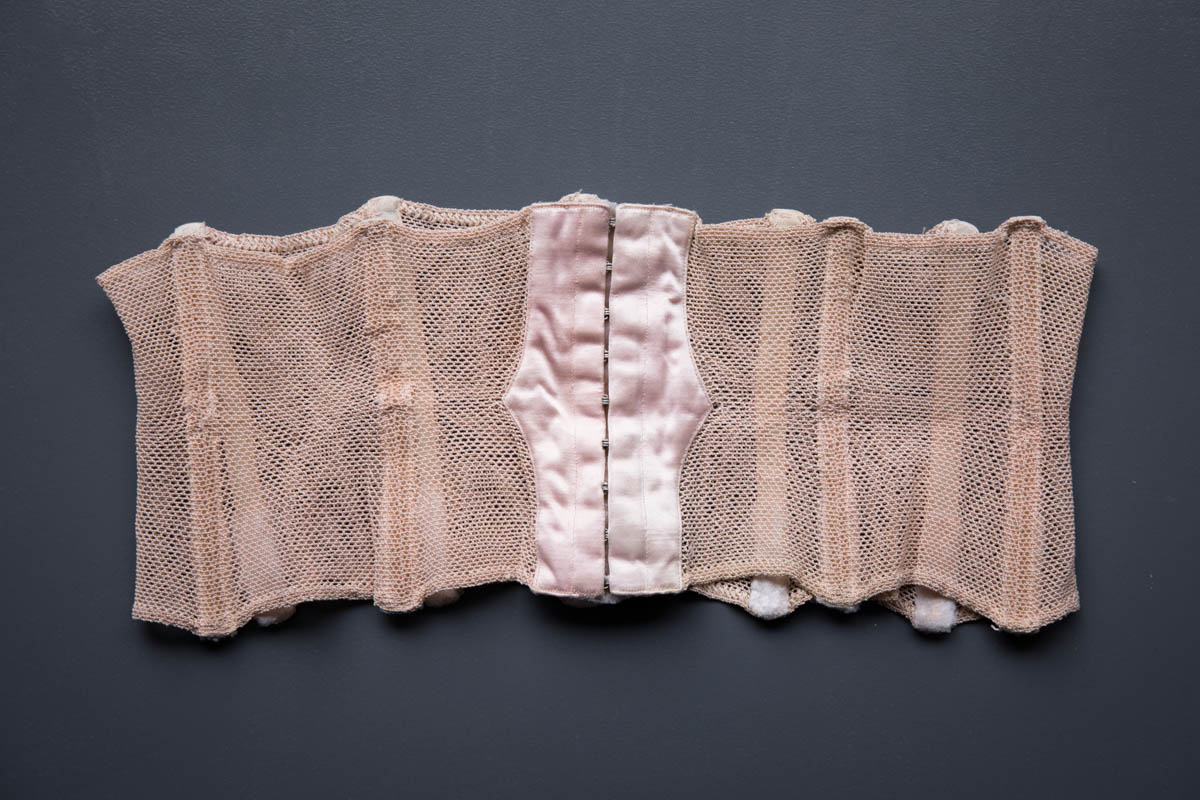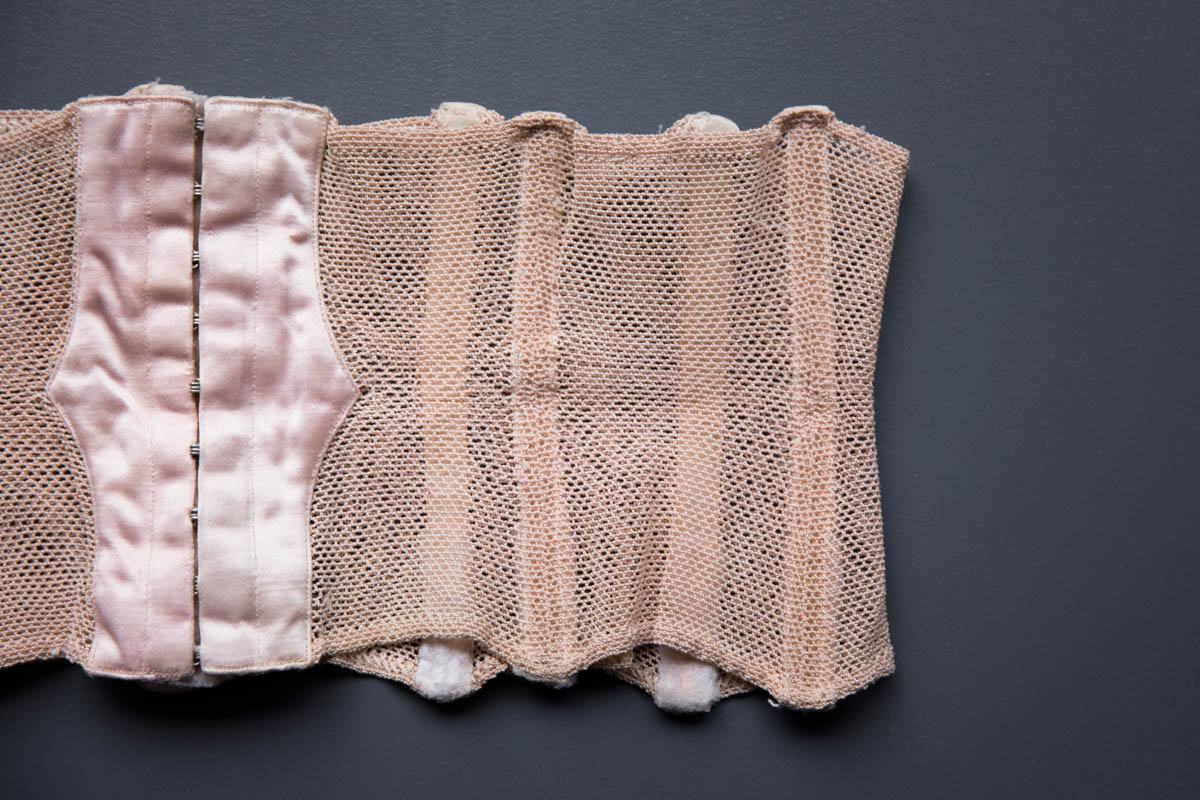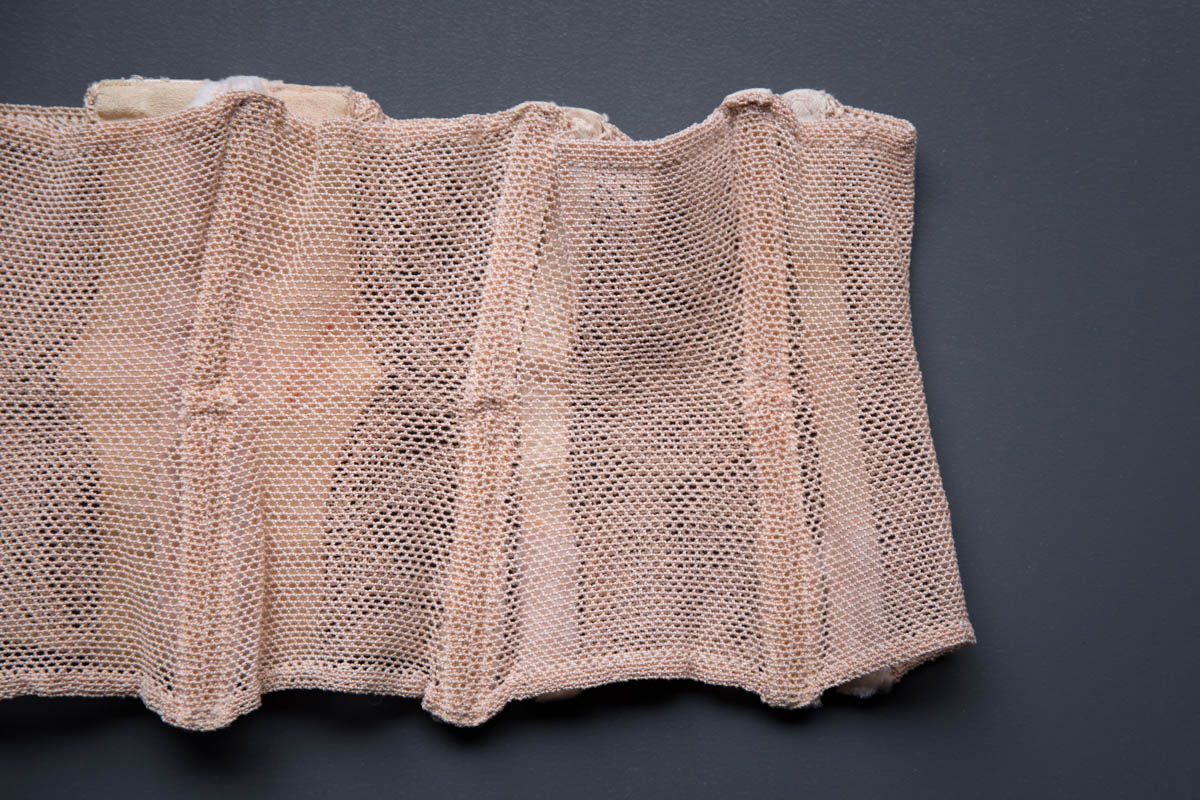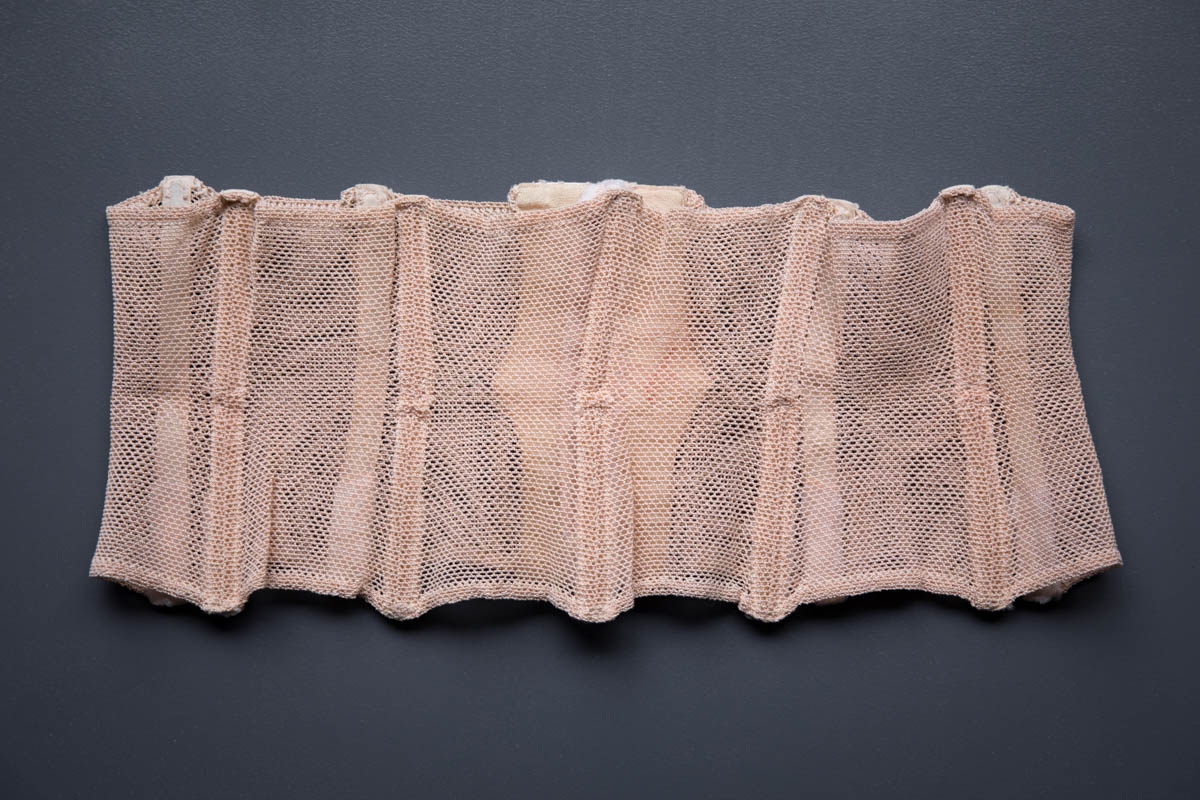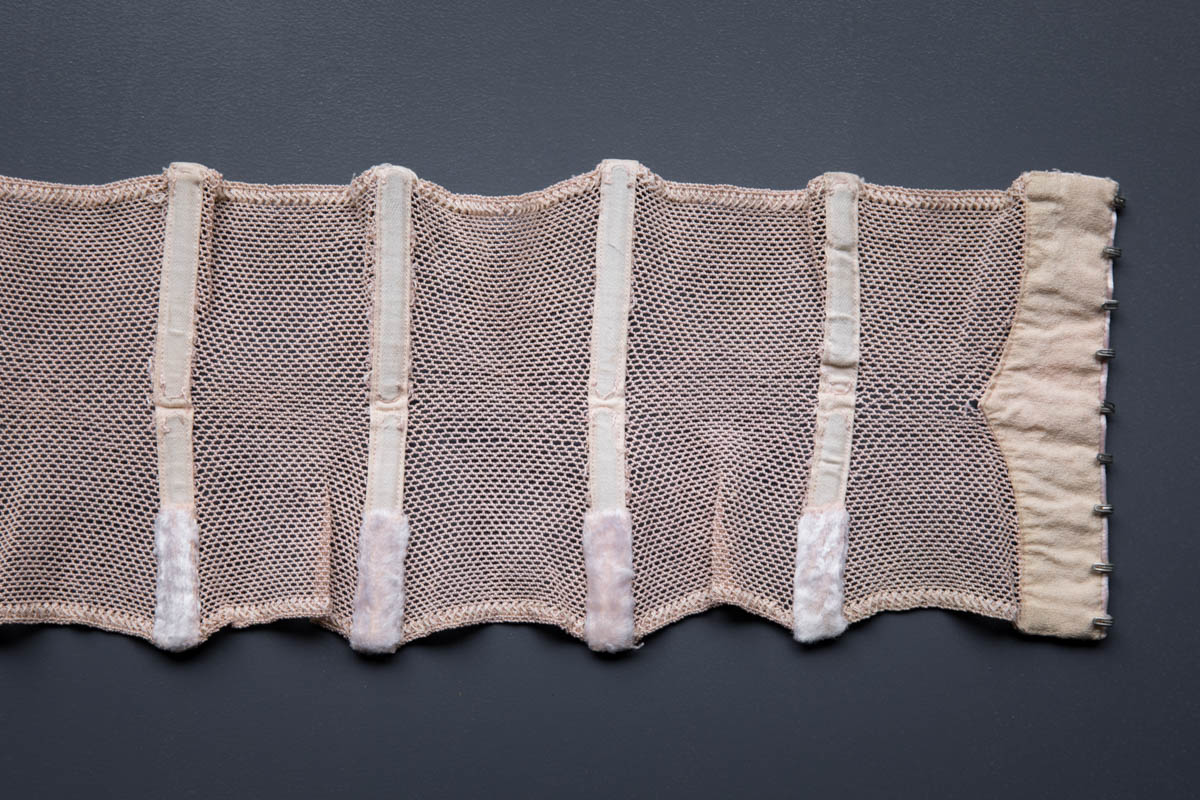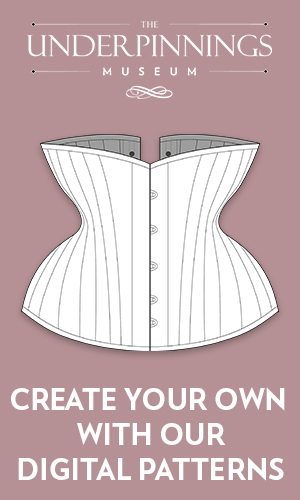Date: c. late 1940s, early 1950s
Origin: Unknown, possibly France
Fabric: Elasticated net, silk velvet, silk satin
Brand: Likely custom made
A luxurious waist cincher designed to give the fashionable nipped waist silhouette of Dior’s 1947 ‘New Look’. This garment was cut to give a dramatic cinch to the waistline, with the elasticated net fabric offering a more comfortable level of compression. Silk satin panelling at the centre front conceals a hook and eye fastening. The cincher is structured with flat steel bones throughout, with rather unusual placement. The bones are all interrupted at the waist, and held in place at the underbust and hip edges with hand stitching. This would have presumably given a much more dramatic waistline than continuous boning, which would not have been able to provide as sharp a curve at the waist. The bottom of the bone channels are all lined with plush silk velvet for additional comfort.
This piece appears to have been custom made, and is of a larger size than much of the museum’s collection (around a 30″ waist). It is relatively unusual for pieces at this luxurious market level and size to be so well preserved. Due to survival bias, it is usually mostly smaller sized garments that are deliberately preserved as these cannot be refashioned or altered as easily, whereas larger sizes are more likely to be worn out in their original time period. This can give a skewed perspective on the most commonly worn sizes of a particular time period, but it is important to remember that people have always had a diverse range of body shapes and sizes.
Waist cinchers have a wide range of names, including but not limited to, guêpières, waist nippers, waspies and even corsets. The style grew in popularity in the early 1950s, as it offered dramatic waist shaping whilst being lighter weight and less constricting than other shapewear styles. Women’s Wear Daily addressed the style in September 6th 1951: ‘Because they do not attempt to nip the figure too much, but are designed primarily to give a smoother waist and rounder hips, these styles are more comfortable to wear. Satin elastic, elastic net, and lace elastic are favored materials. Styles made of all-elastic materials have a slight edge over those with fabric sections in popularity’.
From the collection of Karolina Laskowska
With thanks to Geena Roth for research assistance
